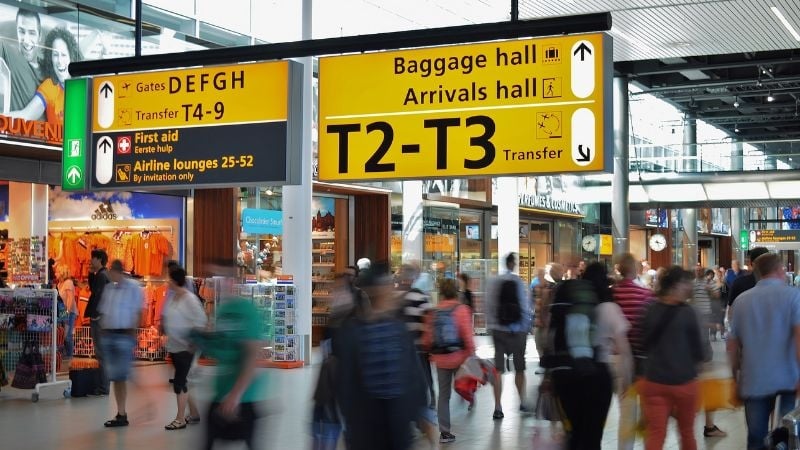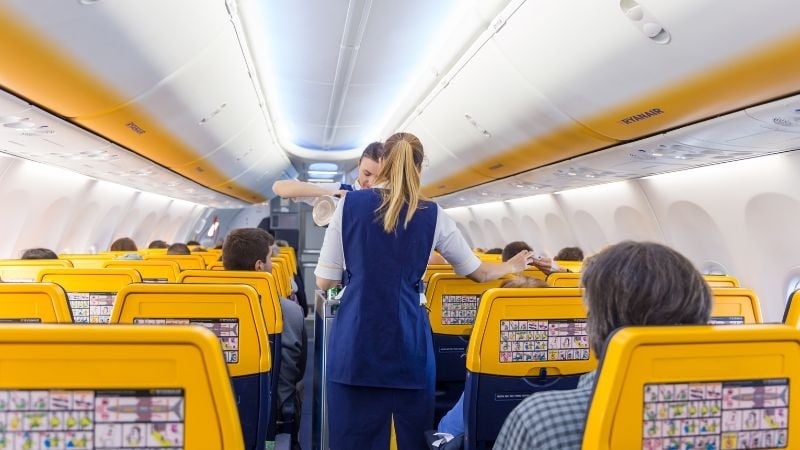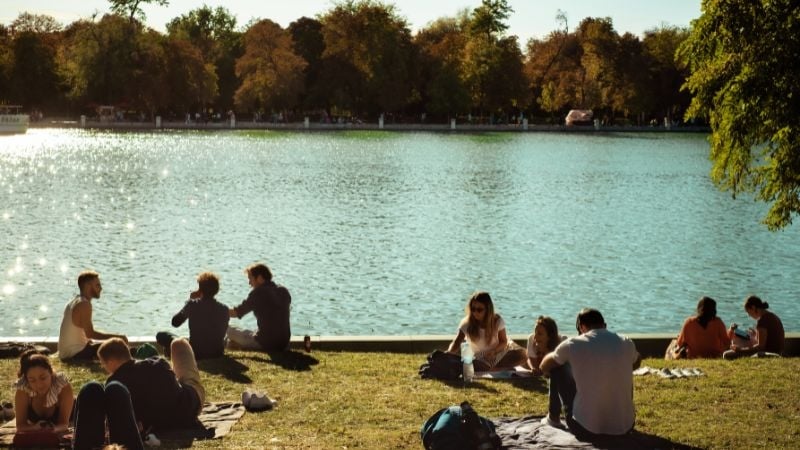Exploring Europe always has a price tag to it. But with a bit of savvy planning and flexibility, you can traverse the continent without draining your wallet.
Here are some tried-and-tested methods to journey through Europe affordably, and some personal tips from my own experience!
Also read: 5 Budget-Friendly Destinations in Asia for Spontaneous Escapes
Embrace budget bus travel

Image credit: Route66 via Canva Pro
For those prioritising cost over speed, buses are a top choice. Companies like FlixBus offer routes across Europe with fares starting as low as €5. Their user-friendly app allows for easy booking as well.
That said, there are reasons why bus fares are so low. You’ll need to be prepared for the occasional delay, long travel times, and very basic comfort levels, especially on overnight journeys.
Personally, I think buses are a great, cost-effective option for travelling between cities during the day. But I wouldn’t recommend doing back-to-back overnight buses throughout your trip; use them strategically to save costs while ensuring you have enough energy to enjoy the experience.
Skip airport transfers and use local transit

Image credit: Skitterphoto via Canva Pro
Travelling to the airport is often a pricy part of European travel that people overlook. Instead of booking expensive airport transfers, research how locals get to and from the airport. Many European cities offer cheap express buses or access through metro lines for a fraction of what private options cost.
Fly with low-cost airlines

Image credit: kasto via Canva Pro
Europe’s budget airlines, such as Ryanair, Wizz Air, and easyJet, are a great option for travellers going from country to country in Europe. With fares sometimes cheaper than a meal, it’s possible to snag deals like €20 tickets to major cities.
Because flight durations are often short, the comfort and service on these budget carriers are more than sufficient for the journey. The one tricky thing to work around is their strict baggage limits. To avoid extra fees, pick up some packing hacks, or if possible, consider sharing just one extra bag with your fellow travellers to split the cost.
Also read: UK and Europe Travel in 2025: New Rules, Fees, and What You Need to Know
Do the math for regional travel passes and tourist passes

Image credit: guruXOOX via Canva Pro
Many countries offer regional travel passes that provide unlimited travel within specific areas for a set period. An example is Germany‘s Bayern Ticket, which offers unlimited travel within Bavaria for a day at a fixed price. These can be more economical than point-to-point tickets, especially if you’re exploring a particular region extensively.
There are also tourist passes, for example, the Paris Pass or Berlin WelcomeCard, which often bundle transport and entry to attractions at a discount. However, they only save money if you’re planning to visit multiple sites in a short time. Calculate individual costs first to see if it’s worth it.
Mix destinations to balance costs

Image credit: carmengabriela via Canva Pro
While cities like London and Paris are popular, they can be pricey. Balance your itinerary by including more affordable destinations like Poland, Romania, or Bulgaria. This approach not only saves money but also exposes you to diverse cultures and landscapes.
Using apps and tools: Travel fees

Image credit: Aflo Images
There are plenty of travel apps out there that can help you save both time and money by comparing transport options across Europe.
Apps like Omio compare prices across buses, trains, and flights, helping you find the most cost-effective routes. You also have specific options like Trainline for trains and Skyscanner for flights. Even just using Google Flights is a convenient way to pull up price comparisons that are easy to look at.
Using apps and tools: Cheap meals

Image credit: nicolamargaret via Canva Pro
There are also apps that help travellers find discounted meals! Apps like Too Good To Go let you purchase a surprise package of unsold food from supermarkets and restaurants at a fraction of the original price. It’s not only affordable, but also a more sustainable way to eat.
Meanwhile, TheFork (available in many European cities) offers restaurant discounts of up to 50% when you book through the app. It’s a great way to enjoy a proper sit-down meal without the hefty price tag, and you might even discover a local gem you’d have otherwise walked past.
Also read: What Apps to Download Before Travelling to China
Attend free walking tours (but tip fairly)

Image credit: JohnnyGreig via Canva Pro
Most major European cities offer free walking tours led by locals or expats. They’re not only cost-effective but also packed with insights you won’t find in guidebooks. While technically “free”, it’s good etiquette to tip around €10–€15 depending on quality.
I went on quite a few walking tours myself, and I don’t regret it at all. The guides are usually incredibly passionate about their city and share stories, local legends, and cultural quirks that bring the place to life. They also often give great local recommendations for food spots and other must-visit places.
Visit museums on free days

Image credit: Andrey X. via Canva Pro
Many museums across Europe offer free entry at specific times or on specific days of the month. For example, the Louvre in Paris is free on the first Friday evening of each month (except July and August), and Madrid’s Museo Nacional del Prado is free most evenings. Be sure to research this in advance!
Cook or picnic where you can

Image credit: Jo Kassis via Canva Pro
Having breakfast or lunch from a supermarket can help you to save loads over time. And it can actually be a very enjoyable experience. Many European parks and public spaces are perfect for picnics, and many local supermarkets like Lidl and Aldi offer budget-friendly meal deals that are pretty decent.
Also read: 10 Best European Countries That Won’t Break the Bank
Keep your wallet happy

Image credit: tupungato via Canva Pro
Travelling through Europe on a budget is feasible with the right strategies. By combining various methods, you can explore the continent without overspending.
Of course, travel often presents us with unexpected situations, and sometimes unexpected spending. But these methods will help ensure you’re prepared for those moments and able to make the most of your journey without letting your budget spiral out of control. Happy exploring!
Featured image credit: TomasSereda via Canva Pro




